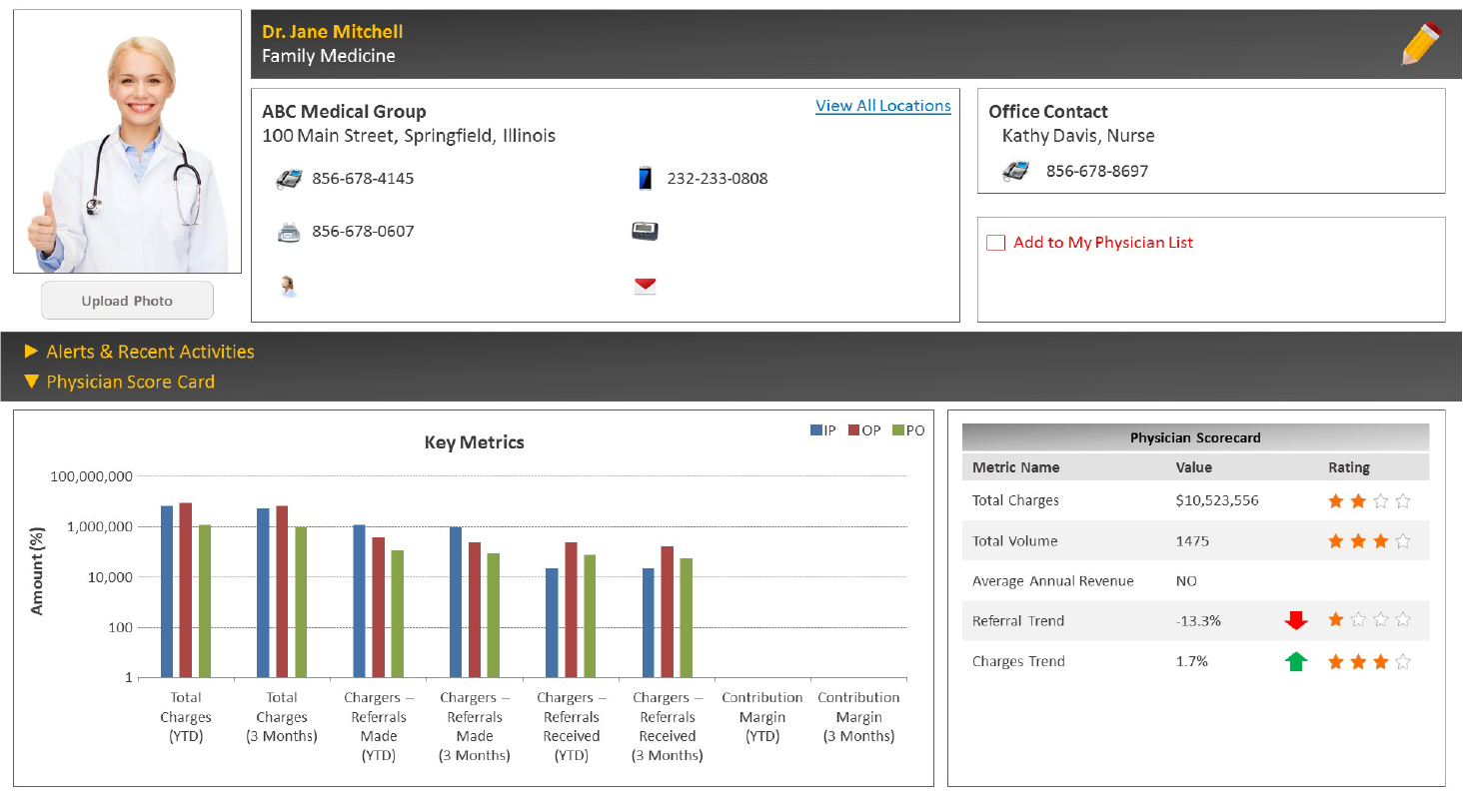PREMISE
Multi-specialty hospitals engage with medical practitioners of various specializations in different geographic areas. Their revenue and growth depends, to a large extent, on the strength of their relationships with the physicians they engage with.
A leading multi-specialty hospital engaged Customer Analytics to develop a physician relationship management system that would enable hospital liaisons to identify the top volume/revenue generating physicians, and the most loyal physicians, through tools such as a “physician scorecard” to help maintain the hospital’s relationship with these physicians.
SOLUTION
Customer Analytics worked with physician rosters and the raw utilization data received from various hospitals to create a physician master and build a scorecard. The scorecard rated physicians on the basis of volume/revenue generated from cases attended, as well as cases referred and upward/downward trends over time with respect to these.
A statistical classifier was trained to model physician’s “volume dispersion” or split of the physician’s patient volume between the client hospital and other competing hospitals (physician loyalty). Even though no direct data was available, this model was developed using various indirect data sources. Physicians were categorized as “high revenue–low dispersion,” “low revenue–high dispersion,” etc., to give the client hospital an overall picture of the proportion of physicians in each bucket and hence, the strength of their relationship with their physicians.



